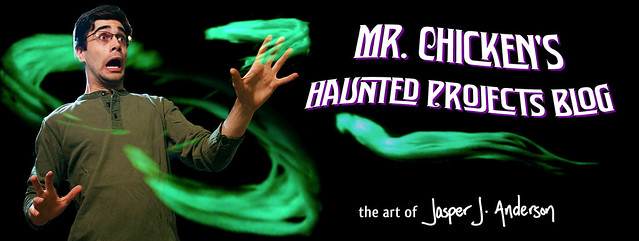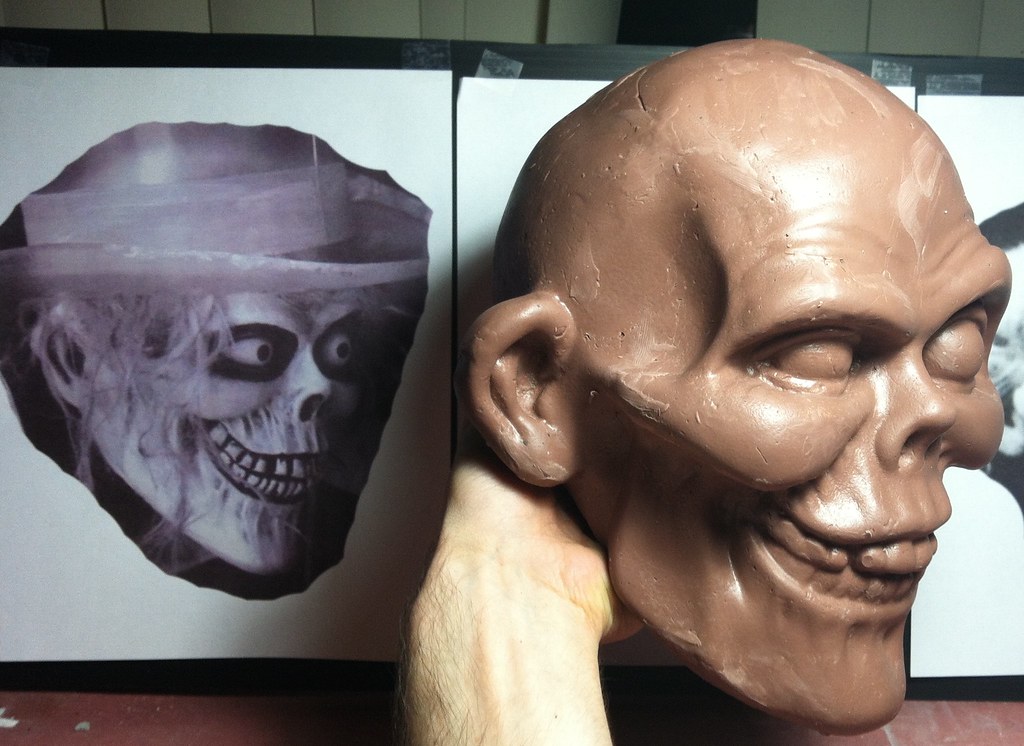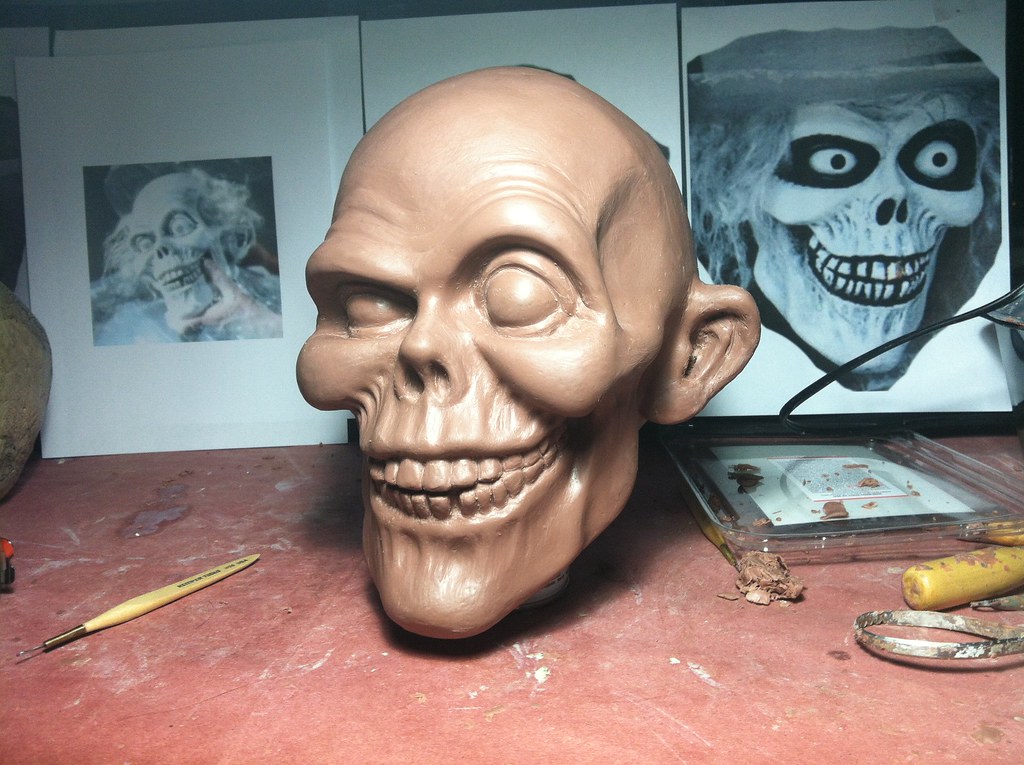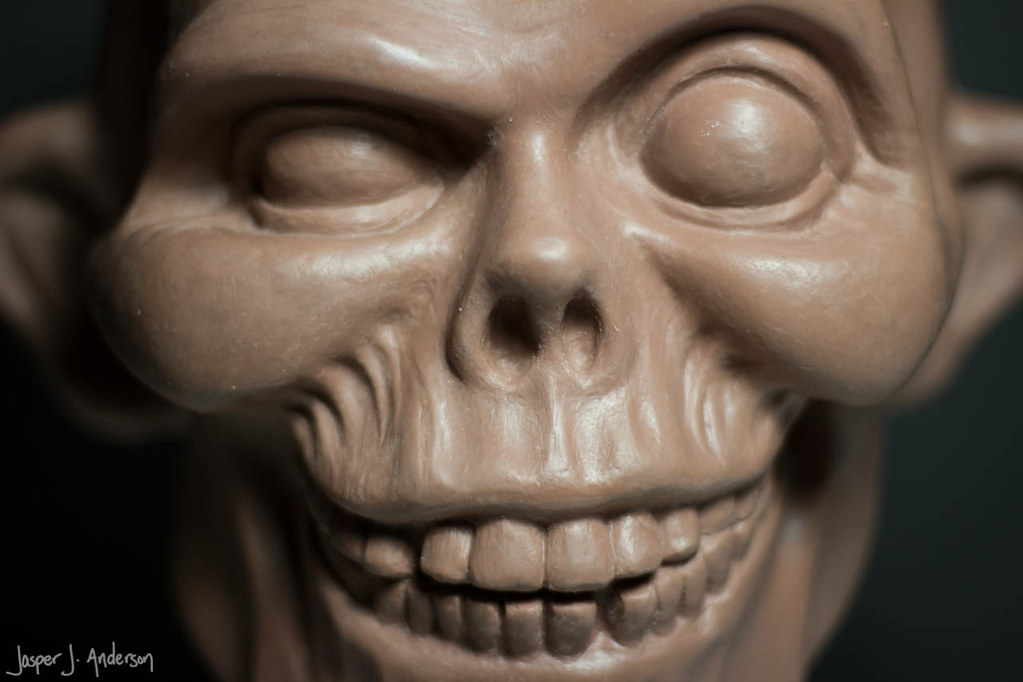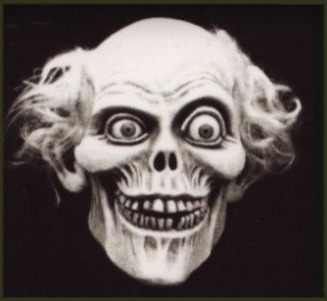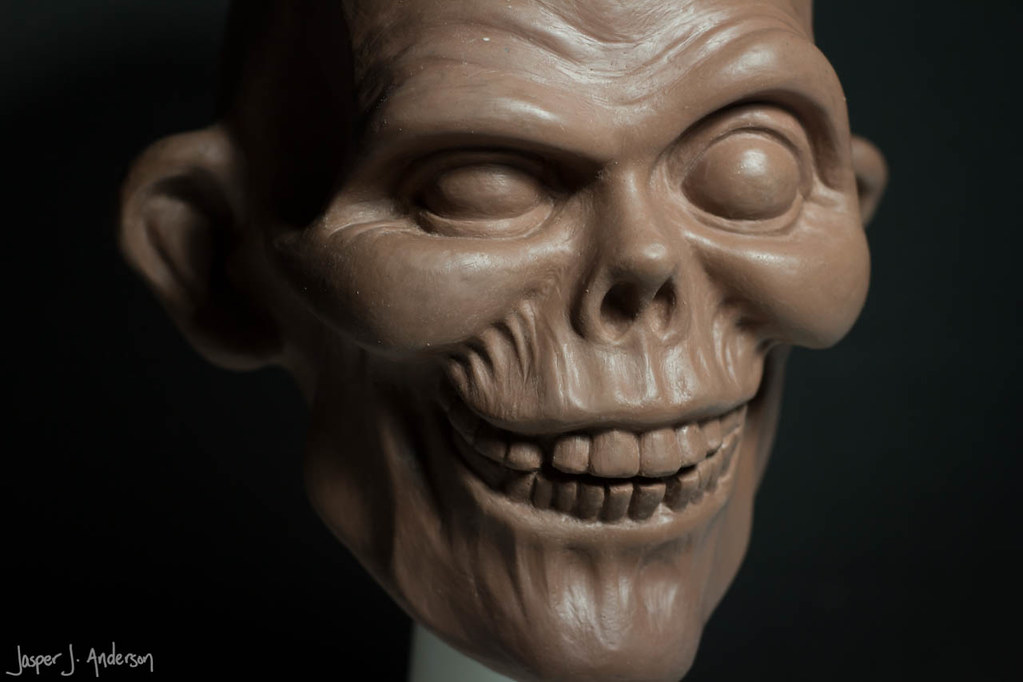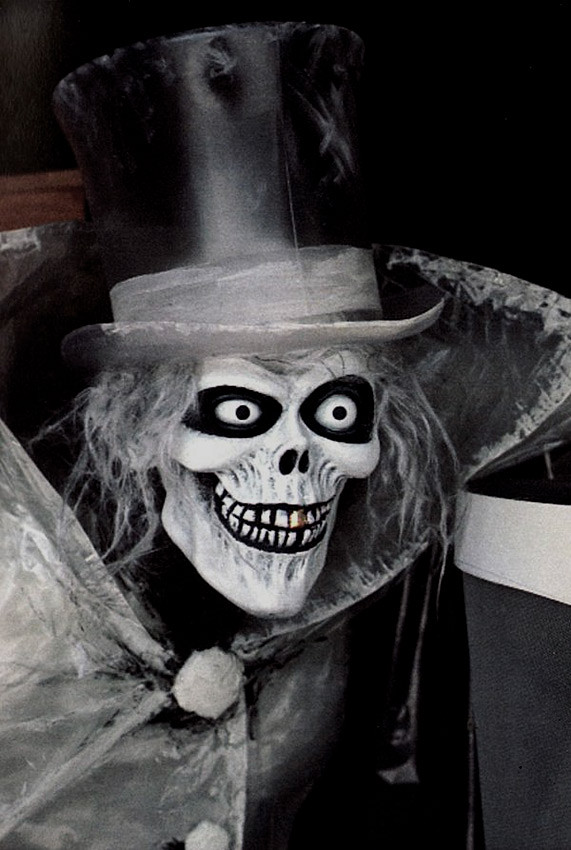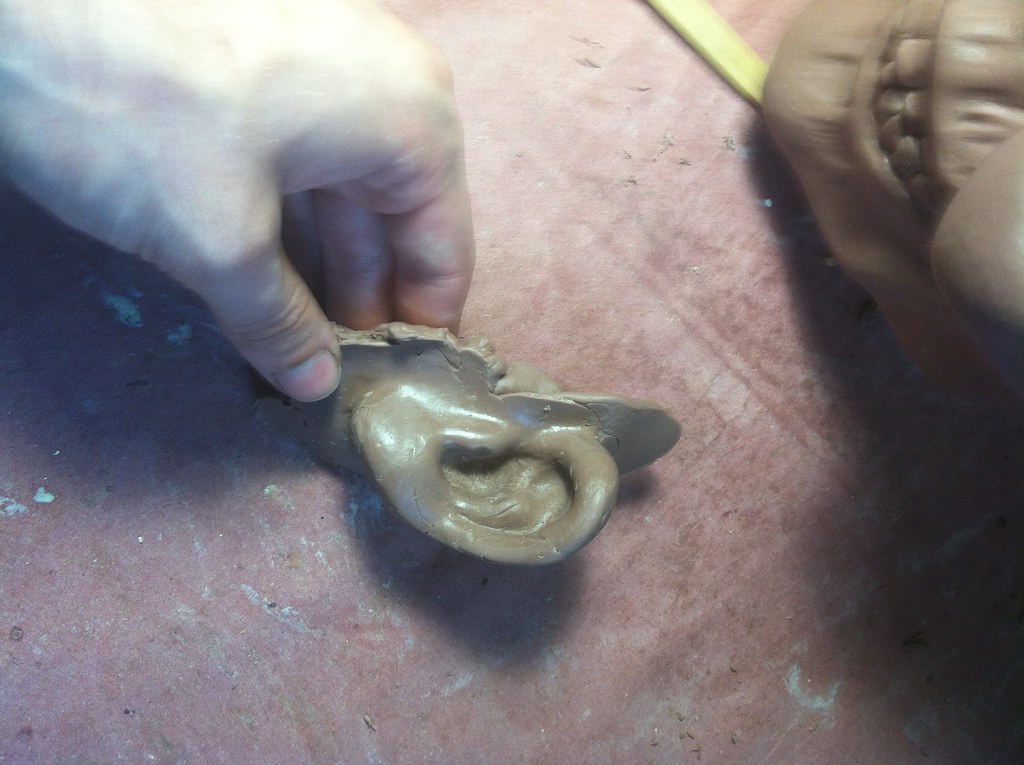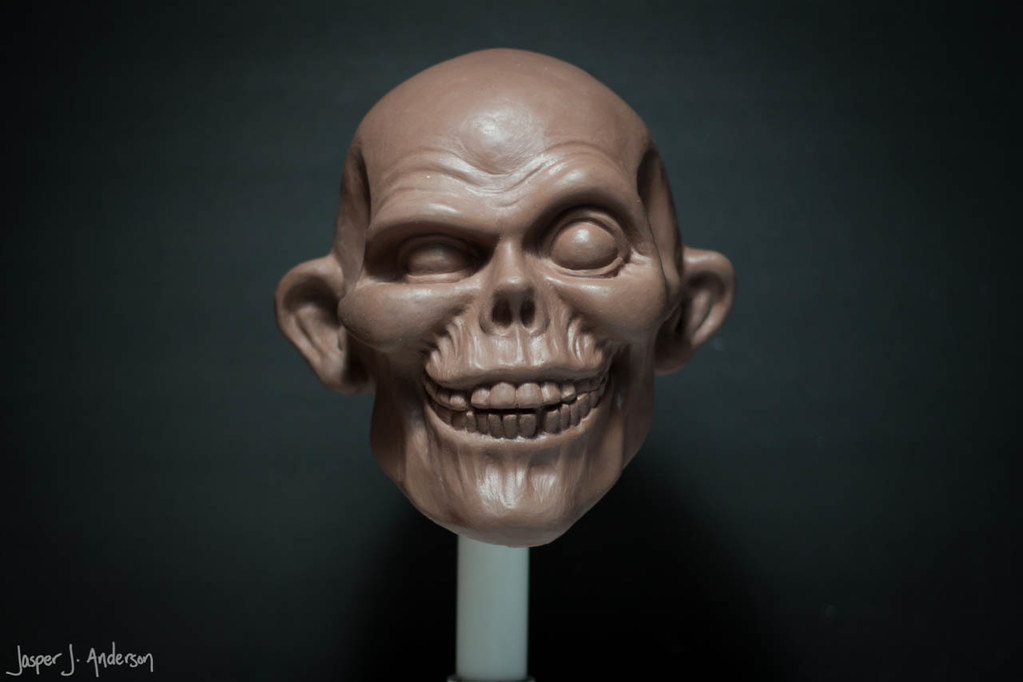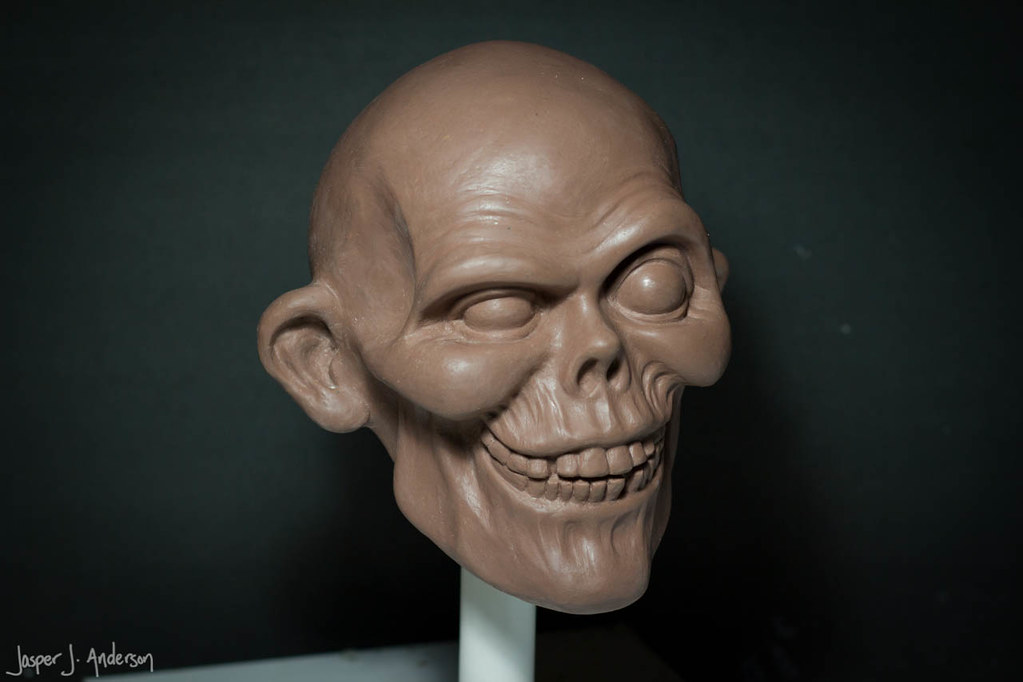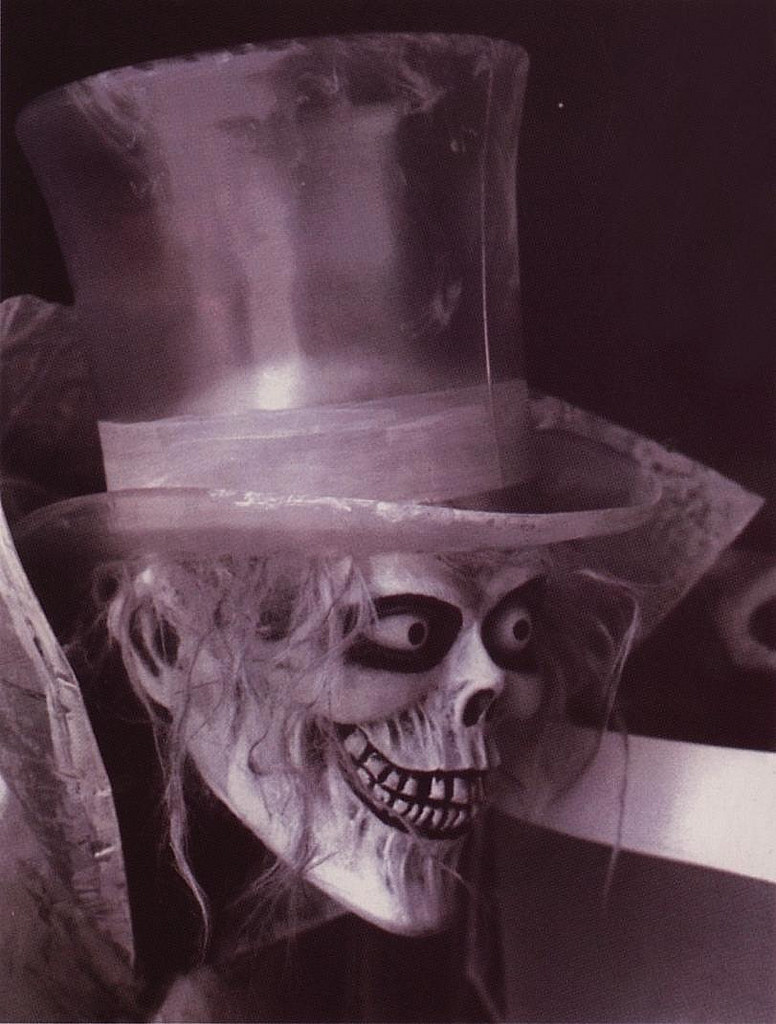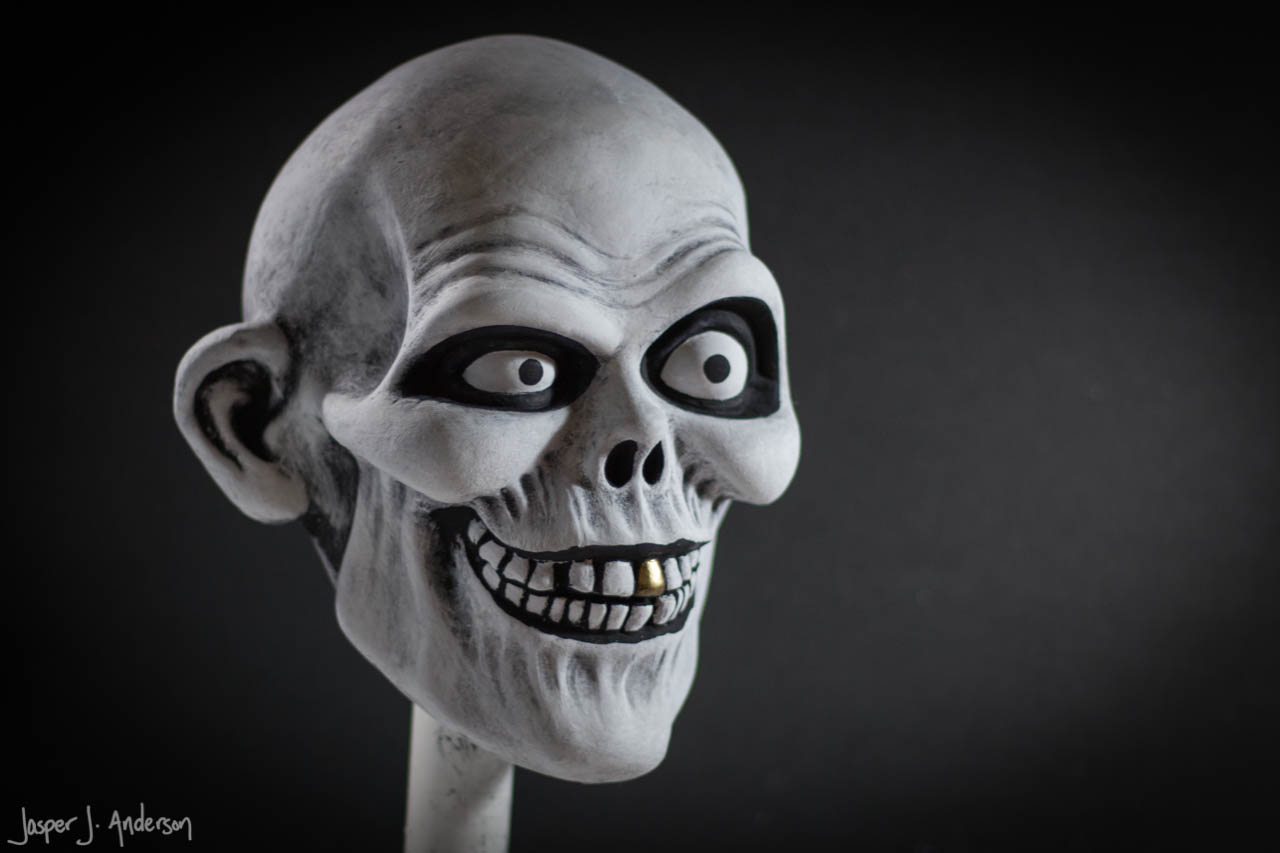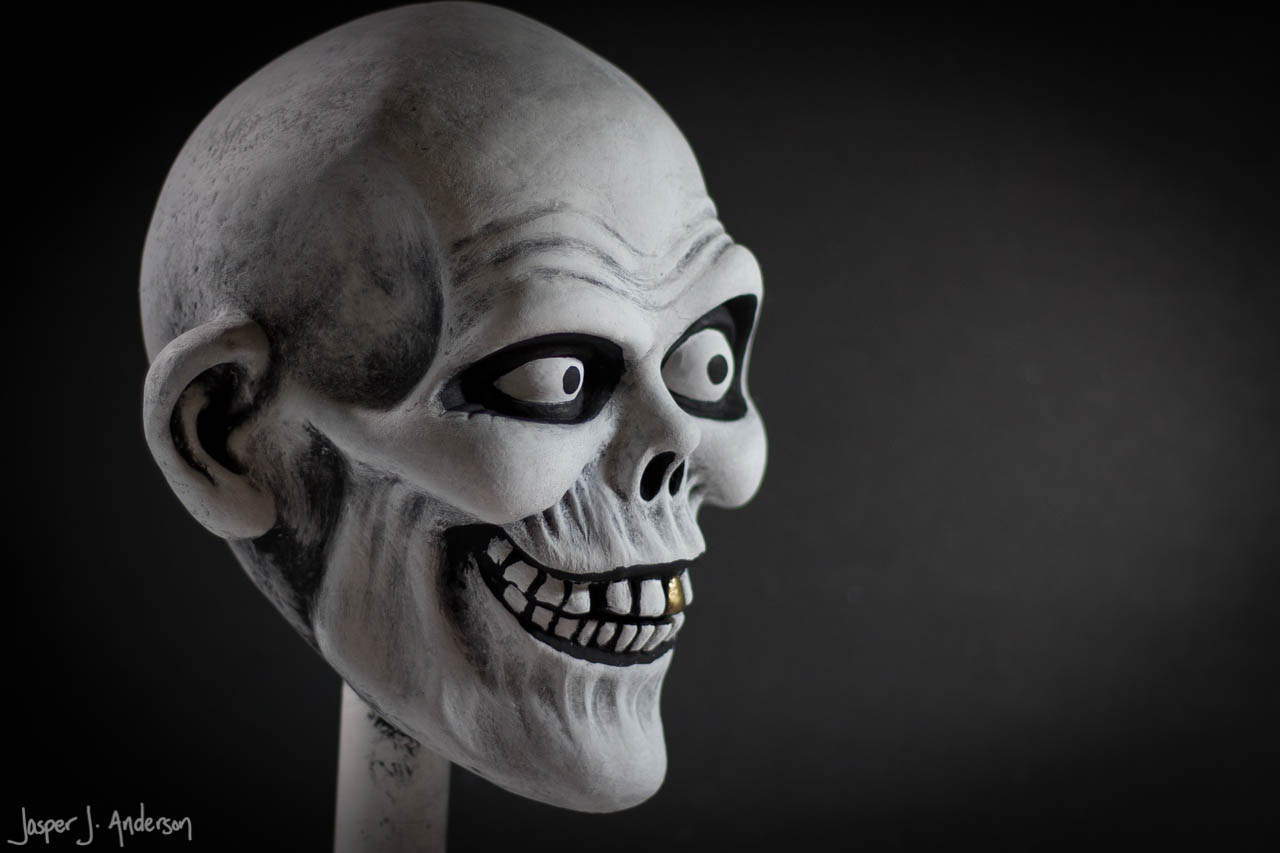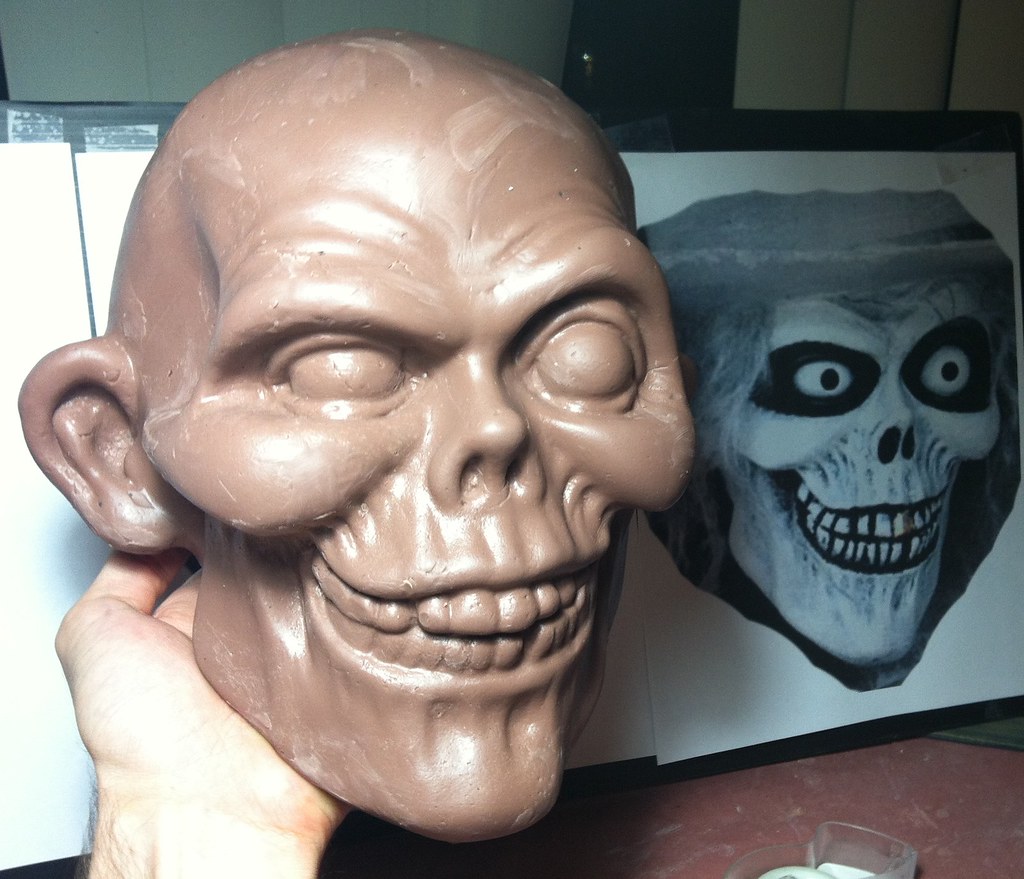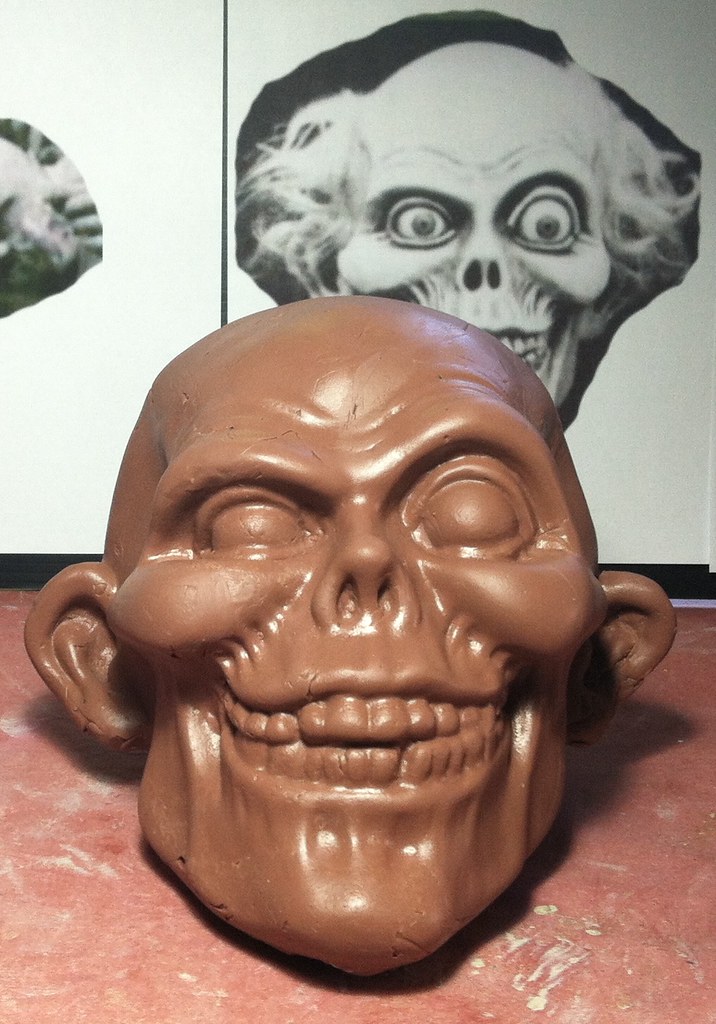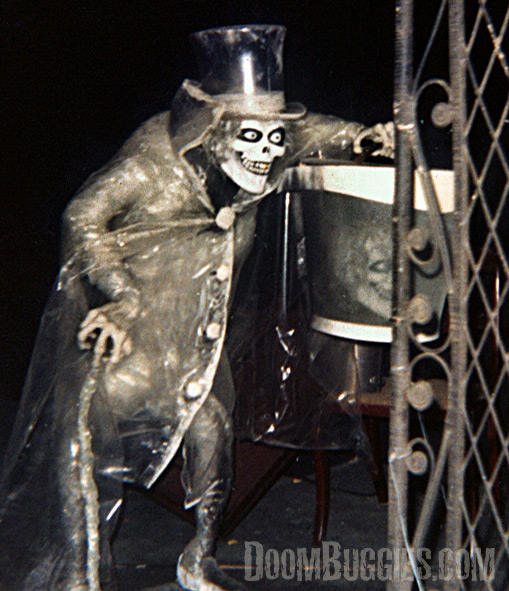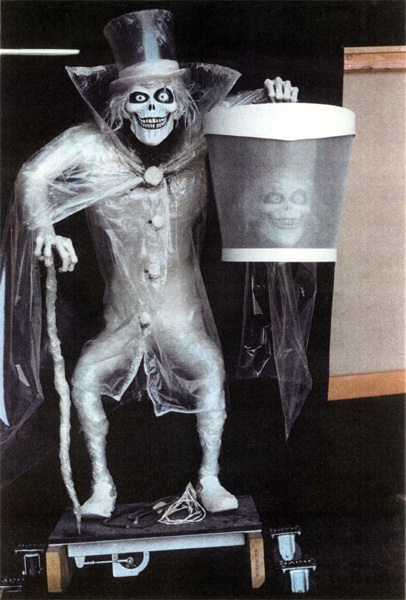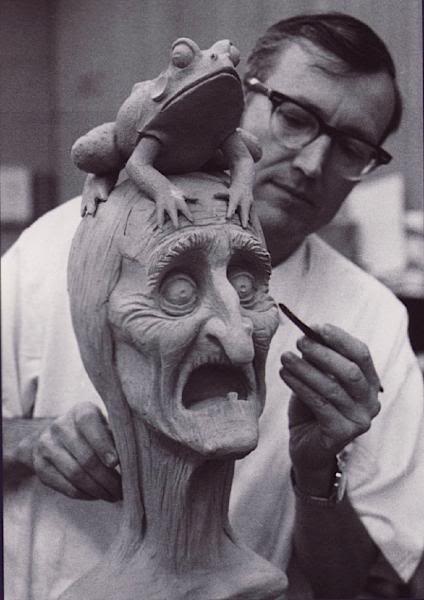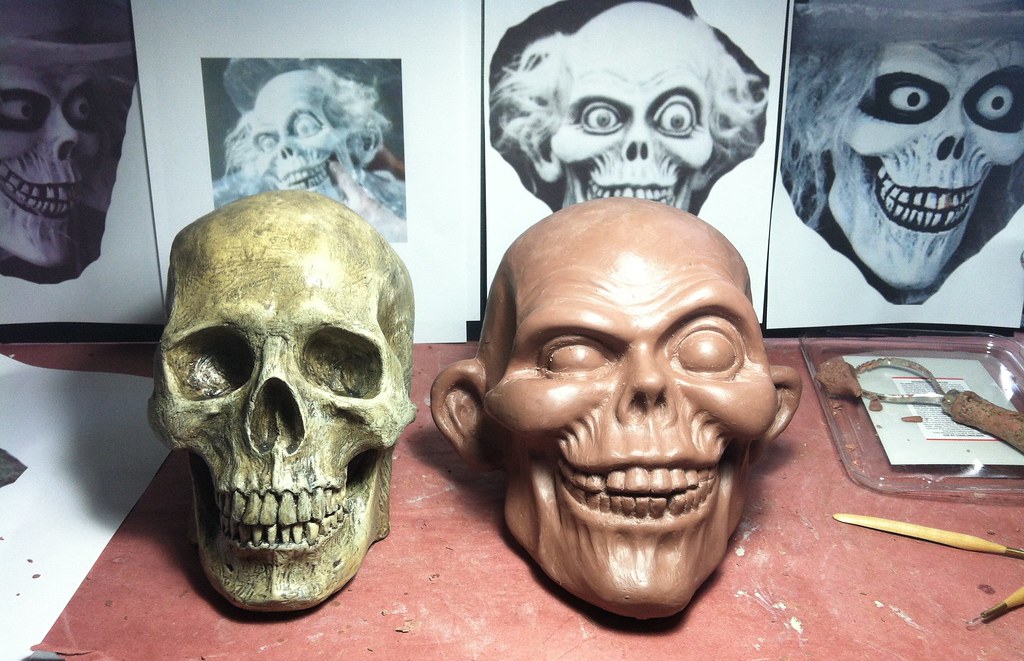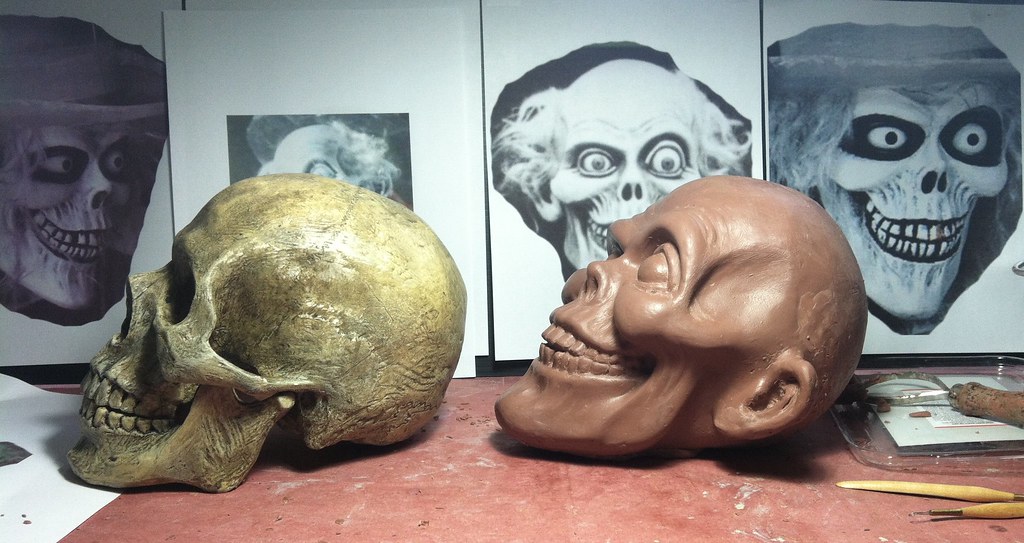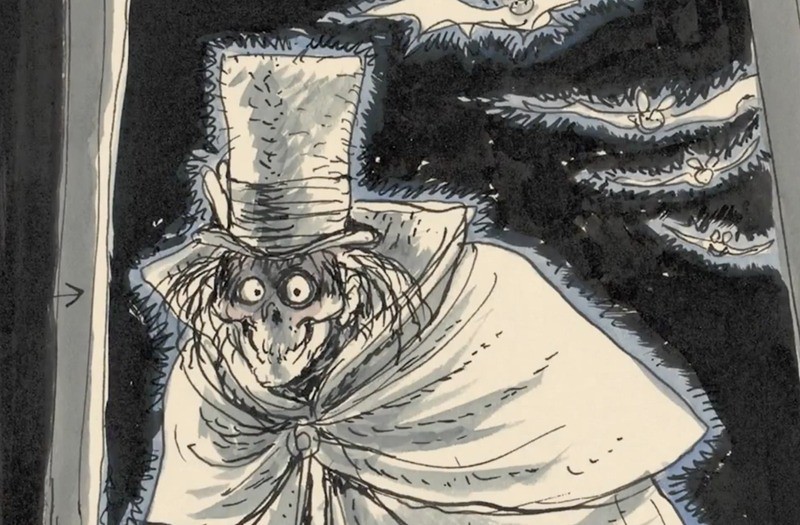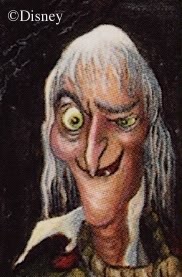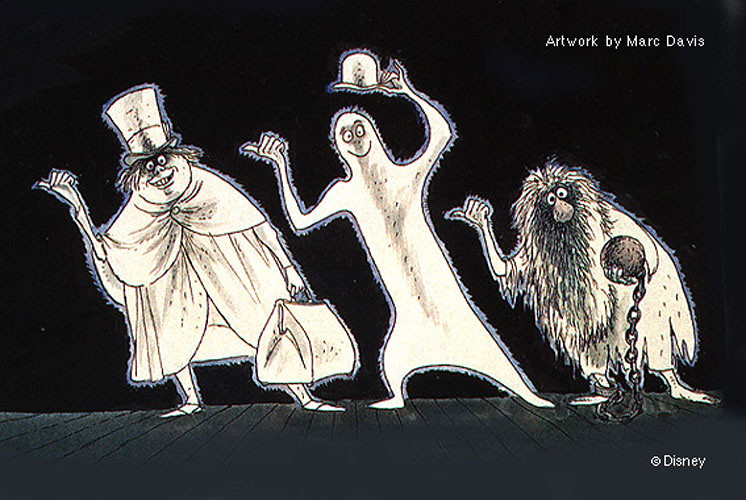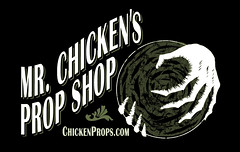Click for Parts 2 and 3.
The Project
I have long wanted my own Hatbox Ghost. As Adam Savage says, it's something I
"can't not make." And while I've toyed with the idea of wholly making my own to various degrees in the past, if I could have the real thing in some capacity, of course that would be preferable!
For the uninitiated, your two sentence summary is that the Hatbox Ghost character was one of the original inhabitants of Disneyland's Haunted Mansion ride, but was evicted within a few weeks of opening because the effect didn't quite work. His head was meant to disappear from his shoulders and reappear in the hatbox he carried in his quivering hand. There are many thorough explanations, such as
this one, for those who want to go deeper. They've just recently
reintroduced him to the attraction (rather masterfully, I might add), but I'm concerned only with the original ghost here.
Now, the story goes that, since he was removed from the Mansion in 1969, even Disney doesn't know exactly what happened to the original figure. Fortunately, the head has lived on in the middle hitchhiking ghost, portraits on the walls, and an occasional popup ghost in the graveyard. It is no doubt a result of one of those figures that such a head landed in my hands last month...sort of. You may have seen a head parading around eBay as a copy of the actual heads from the ride. It's usually available there. A friend of mine picked one up, unsure of whether it was what it claimed to be, but happy to have something that at least looked like it came from the Mansion. I'll discuss the probable origins of this piece later on in Part 2.
I've seen several attempts to sculpt this fellow from scratch, some better than others, but each has their own character, which is always at least a little bit different from the original. It's a peculiar and tricky expression to strike, so it was immediately obvious to me that this was, indeed, sourced from the original sculpture, but considerably worse for wear after many generations of molding, casting, remolding, and so on. All the forms are correct, just softened and distorted in places.
My project is to make something that is more accurate, but less authentic than this "eBay head." More accurate because it will be, as far as I can tell, the most exacting replica of the original Hatbox Ghost sculpture by Blaine Gibson. Less authentic because it will mean me meddling with the remains of Gibson's work to get there. That will be Part 3.
Before I get into what I've done, I really want to take a look at what the master did here.
Gibson's Sculpture
You know Blaine Gibson's work. If there's a head at Disneyland, chances are he's the one behind it. Even after his retirement, he still art directed some of the newer statues for California Adventure.
But of all his contributions, none is more iconic to its attraction than the Hatbox Ghost.
I've come to the conclusion that this head was probably a one day sculpture. Maybe two, but I'd be surprised if it were more than that. It's not an unreasonable figure for someone who had just sculpted hordes of Pirates for another attraction you probably know. A large part of my reasoning here comes from some unusual details that can only be explained as a sculptor in a rush. I'm looking specifically at the teeth, and the first thing I noticed is the molars of the lower right side of the head. Below is a shot of the raw clay copy I made of the eBay head.

There's a curious bank of space that appears unrendered. It seems clear that it isn't meant to represent missing teeth, because he's missing other teeth, and those voids are carved fairly deep. Here, it bows out just like the other molars, but it's as though three of them never got separated. It doesn't detract from the sculpture in any way, especially as it's viewed in situ, but it can't have been a conscious decision, unless the decision were to prioritize the rest of the sculpture, because it needed to be done fast.
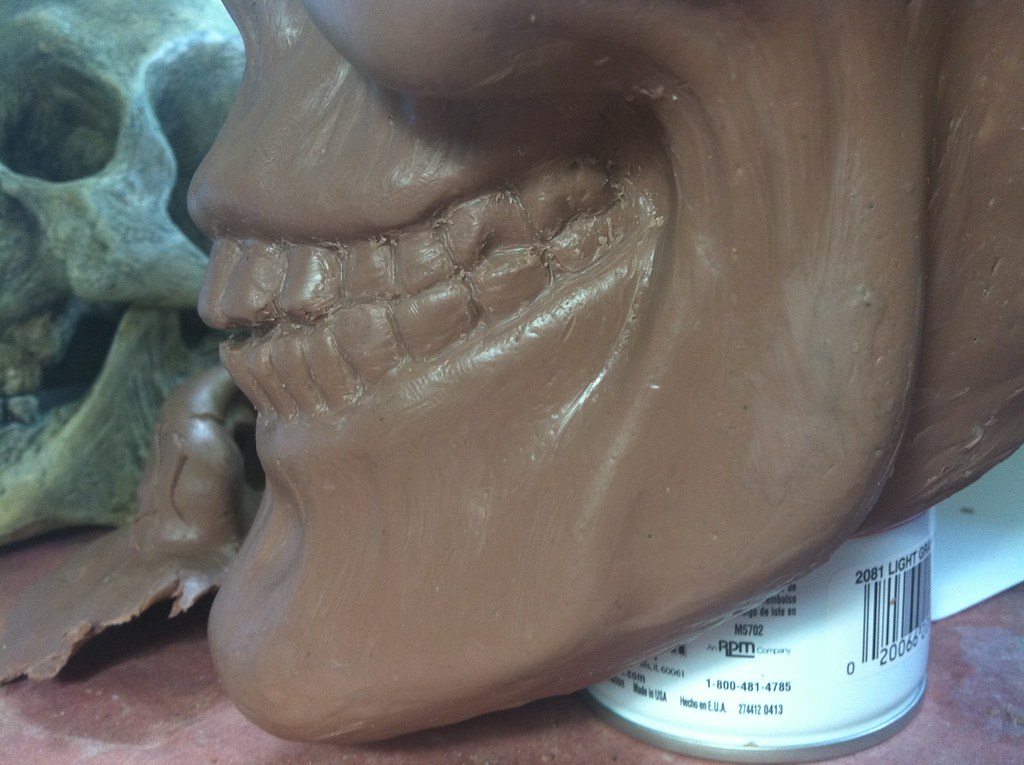
There's another dental anomaly that furthers my theory here. Looking at the left molars, they've been sculpted with much more detail than the ones that remain on the right. Notice how they have clear peaks and valleys on the left, but none of the right. I'll bet Gibson spent most of his time looking at the left side. Perhaps he was putting his focus into getting that one big eye right, or perhaps he didn't have it on a turntable, and it was easier to get to the left, or perhaps it was just chance. The takeaway here, however, is that these details
don't matter. Gibson focused his efforts on the overall design, and let the secondary forms fall to a lower priority.
Any professional sculptor will tell you the form is more important than the details. It's especially true in the case of Gibson's character work, because audiences will never be close enough to appreciate anything but the primary forms. Just look at how boldly it's painted. Now, if it were done today, there probably would have been a stronger emphasis on details, mainly because of changing tastes and greater scrutiny. In fact, when the hitchhiking ghosts in Florida were updated a few short years ago, the character that shares the Hatbox Ghost mold was
resculpted and given finer detail. Other slight design changes were made, as well, but that's another story.
What I really want to talk about, but have few words for expressing, are the features of this sculpture that really make it special.
When you think of the Hatbox Ghost, you probably don't think of his ears, but have a good look. Gibson made them bent forward where the hat sits across them! The effect relies on his hat and his hatbox, so emphasizing the hat in the sculpture of the head is just brilliant.
There's another big creative choice happening with the ears. Gibson sculpted them much farther toward the back of the head than real ears are. Just feel on your own head how close your ears are to your jaw bone. I believe he did this to emphasize the boniness of the character, allowing the jaw bone to exist in its entirety, without disruptions, with a nice deep cavity behind it before the ear begins.
The Ghost is essentially a caricature of a skull, so I figured the easiest way to discern what choices Gibson made that diverted from reality is to set it next to a good skull model (like the one I sculpted-- hey, it was handy). Note that the clay head is mid-restoration in these comparison photos. Have a look at the proportions. Overall it's about the size of a human head, but now see where the features fall. The eye placement is about the same, but of course there's that fantastic brow lifted much too high for any real face.
The nose is
not the defining feature. This fellow's nose has withered away in his death to the point where it's much smaller than the space allowed by a real skull. Now, think about when someone smiles really big, and their lips rise up and stretch toward their teeth. It makes their chin appear pointier because the lips are pressed closer to the skull. Here, he's sculpted the chin to a pointy extreme, with lines of tension showing the stretching of the lips upward.
Note the teeth, too. The character is all about that grin, so the entire mouth, teeth and all, is raised with the lips, to really drive that home. Notice, too, that the vertical section of the jaw bone is made much thinner than a real skull so that the toothy grin can be stretched wider. The bone around the eye socket at the temple is also minimized to favor the expression over anatomy. Cool, right? I believe all these choices were made on the fly, in the sculpture. And whether or not that was strictly the case, they do reveal a great deal about Gibson's artistic thought process.
But why do I think Gibson was making these choices as he worked? To my knowledge, there is only one piece of concept artwork for the Hatbox Ghost, drawn by Marc Davis, and it doesn't
really provide much direction for the sculpture. I do think, however, that Gibson got the idea for the differing eyeballs from this design. If you look at it up close, and remember Gibson probably would have seen it even bigger, you'll notice that the character's right eye is
slightly smaller than the left. Just enough to make you wonder, but not quite enough to appear to be the intention of the piece.
Now, Davis' artwork for the "Hatchet Man"
does do the eye trick, and no doubt also influenced the Hatbox sculpture. I'll let you read more about the origins of that fellow at this lovely blog
here. The expression is very different, however, so there's still a high degree of artistic license on Gibson's part.
At this point you might wonder if the hitchhiking ghost artwork was closer to the design of the sculpture. After all, it's the same head on both figures. But Davis' drawings of the hitchhiker seemingly all appeared as a "sheet ghost," so it leaves no doubt in my mind that the Hatbox Ghost came first, and lent his head to the hitchhiker. And it's a good thing, too. Because when a dimensional caricature is this strong, it would be a shame to have it only tied to the one character that gets hidden away as soon as he moves in.
In Part 2, I look at the specific problems with the head casting, and try to identify their causes.
Part 3 covers my sculptural restoration of the Hatbox Ghost head casting.
